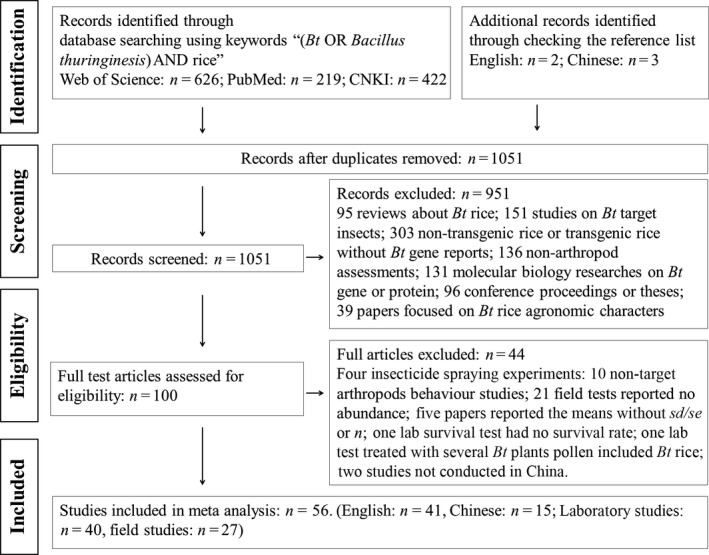Research in the Lab
Research in our lab is broadly focused on two parts, (1) Parasitoid wasp biology and (2) Rice biology. In the studies of parasitoid wasps, our researches mainly focused on studying the processes and mechanisms of the successful parasitism of parasitoid wasps on their arthropod hosts (most of them are agricultural pests) and developed new approaches for biological control. For the studies of rice biology, our research interests are mainly focused on the interactions between rice plant and pest, as well as nature enemies in rice paddies. We want to find some new approaches, including transgenic plants and biological agents, to control rice pests. Meanwhile, the biosafety of these new pest management approaches is also our topic.
Parasitoid wasp genomics
Parasitoid wasps (in Hymenoptera) comprise extremely diverse insect species with many life history traits, providing an ideal model for studying the evolutionary origin and transition of some key traits. Genome sequencing will greatly facilitate the understanding of adaptation, evolutionary innovation, and phenotypic diversity of parasitoid wasps. In addition, the genome resources of parasitoid wasps will also advance comparative genomics studies of insects. To data, we and our collaborators have finished over 20 parasitoid wasp genome projects (such as Pteromalus puparum, Cotesia chilonis, Gonatopus flavifemur), all of the sequenced species are important natural enemies for agricultural pests. Using diverse ‘omic’-scale data and comparative genomic approaches, our works have provided exciting results indicating the genetic basis and evolutionary processes underlying the vast diversity in terms of ecology, behavior, and physiological traits in parasitoid wasps. We and our collaborators are currently sequencing a more comprehensive catalog of parasitoid wasp genomes using state-of-art technologies, and any relevant cooperation is welcome.
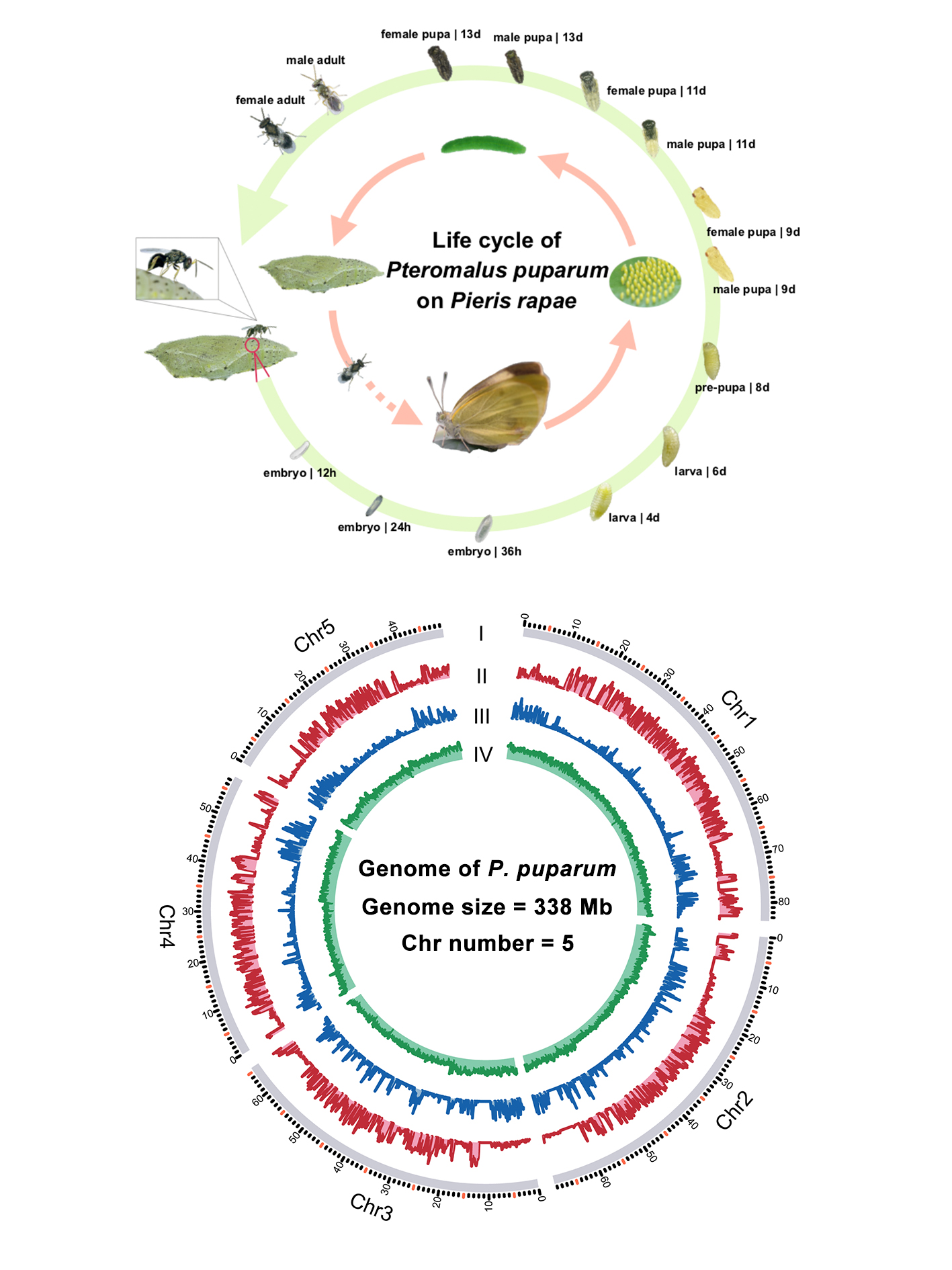
Functional studies of parasitoid wasp’s weapons against their hosts
Parasitoid wasps introduce a variety of factors into hosts, including venom, polydnaviruses (PDVs), teratocytes, virus-like particles (VLPs), ovarian proteins and larval secretions, to suppress the immune responses, manipulate the metabolism and gene expression of their insect hosts in ways that create a suitable environment for feeding wasp larvae. Thus these “weapons” of parasitoid wasps are also valuable resources for developing new “pesticides” for biological control. Our researches mainly focused on identifying the new parasitism-associated factors, and studying the mechanisms of how these factors work. Our previous works have identified hundreds of venom proteins from many parasitoid wasps, by examining the contents (i.e., venom fluids) in the venom reservoir using mass spectrometry, together with RNA sequencing to estimate the expression level of candidate genes in the venom gland. To data, our functional studies have revealed the roles of over 40 venom proteins in regulating host physiological processes, such as immunity and development. We have recently expanded to focus on the scientific hypothesis whether larval salivary proteins of parasitoids can inhibit or regulate their host innate immunity as their venom in order to ensure their survival and development after the early stage of parasitism, and our works have provided unique insight into the important roles of parasitoid larvae salivary proteins on regulating host immunity.
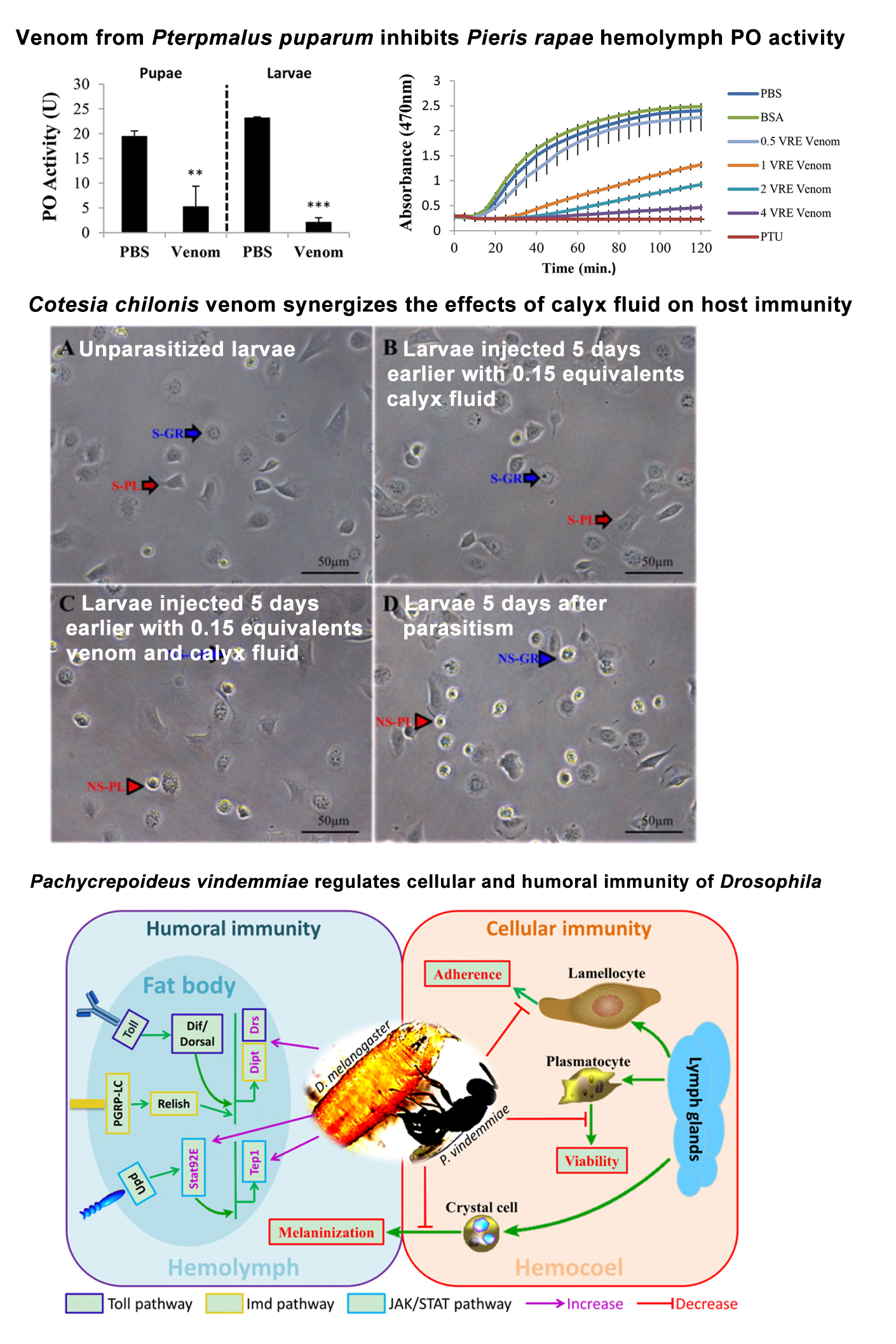
Venom evolution
Venom system is a key model for studying evolutionary innovations. Parasitoid wasps use their venom as a major weapon against their hosts. To adapt to the varied hosts, parasitoid venom repertoires evolve rapidly, providing an excellent model for understanding how genes evolve to acquire their new “job” in venom. Using the high-quality data, we are currently studying the venom evolution of parasitoid wasps. Our results of many parasitoid wasps have showed that many different evolutionary models, including duplication followed by neofunctionalization, co-option, lateral gene transfer have involved in the venom evolution of parasitoid wasps. In the study of two Anastatus wasps, we find that the co-option evolution arose by expression shifts in the venom gland and plays a dominant role in venom turnover. In addition, this study uncovers the potential importance of transposable element insertions in driving gene expression shifts, contributing to their co-option in the venom gland. This discovery offers a reasonable explanation of the genetic basis underlying rapid venom turnover during parasitoid wasp evolution. Our ongoing project will strengthen this hypothesis through expanded sampling and functional studies. Overall, our works are important for understanding mechanisms of venom evolution and new gene function evolution. We have also developed a manually curated database, called iVenomDB (including over 4000 venom protein sequences of parasitoid wasps), to provide scientific community with the venom protein sequences, structures and other important functional information.
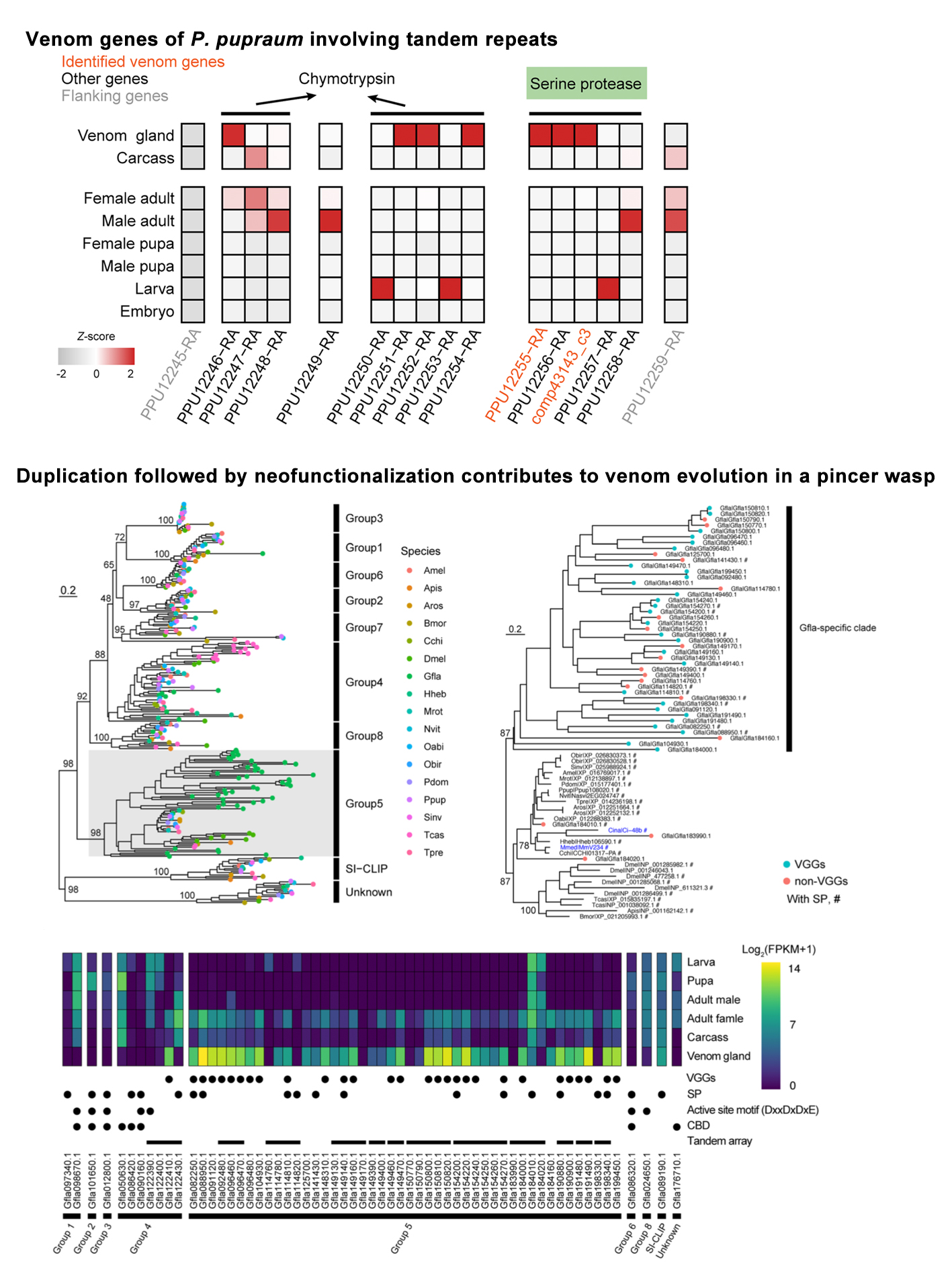
Virus on parasitoid wasps
Our understanding of the diversity, evolution and functions of viruses on parasitoid wasps is largely limited. Our systematical scanning has revealed a number of viruses on different parasitoid wasps. Our previous work identified a previously unknown virus on model parasitoid wasp Pteromalus puparum. The virus, dubbed PpNSRV-1 represents a novel genus of the taxonomic order Mononegavirales, making it the first virus of that genus to be found in parasitoid wasps. Our results showed that the virus lengthens the lifespan of the wasps, which may help the virus by giving wasps more time to transmit the virus to more hosts. And importantly, PpNSRV-1 also reduces the number of female offspring produced by the wasp. It is first reported that the virus associated with parasitoid wasps has the key role in regulating wasp offspring sex ratio before which only bacterial symbionts such as Wolbachia are considered to be related to regulate its host wasp sex ratio. Another featured study described a novel cripavirus (RoWV-1) of a parasitoid wasp Pachycrepoideus vindemmiae, which may have a potential benefit to the wasp by increasing not only the number of potential wasp hosts but also the developmental time of the hosts to ensure proper development of wasp offspring.
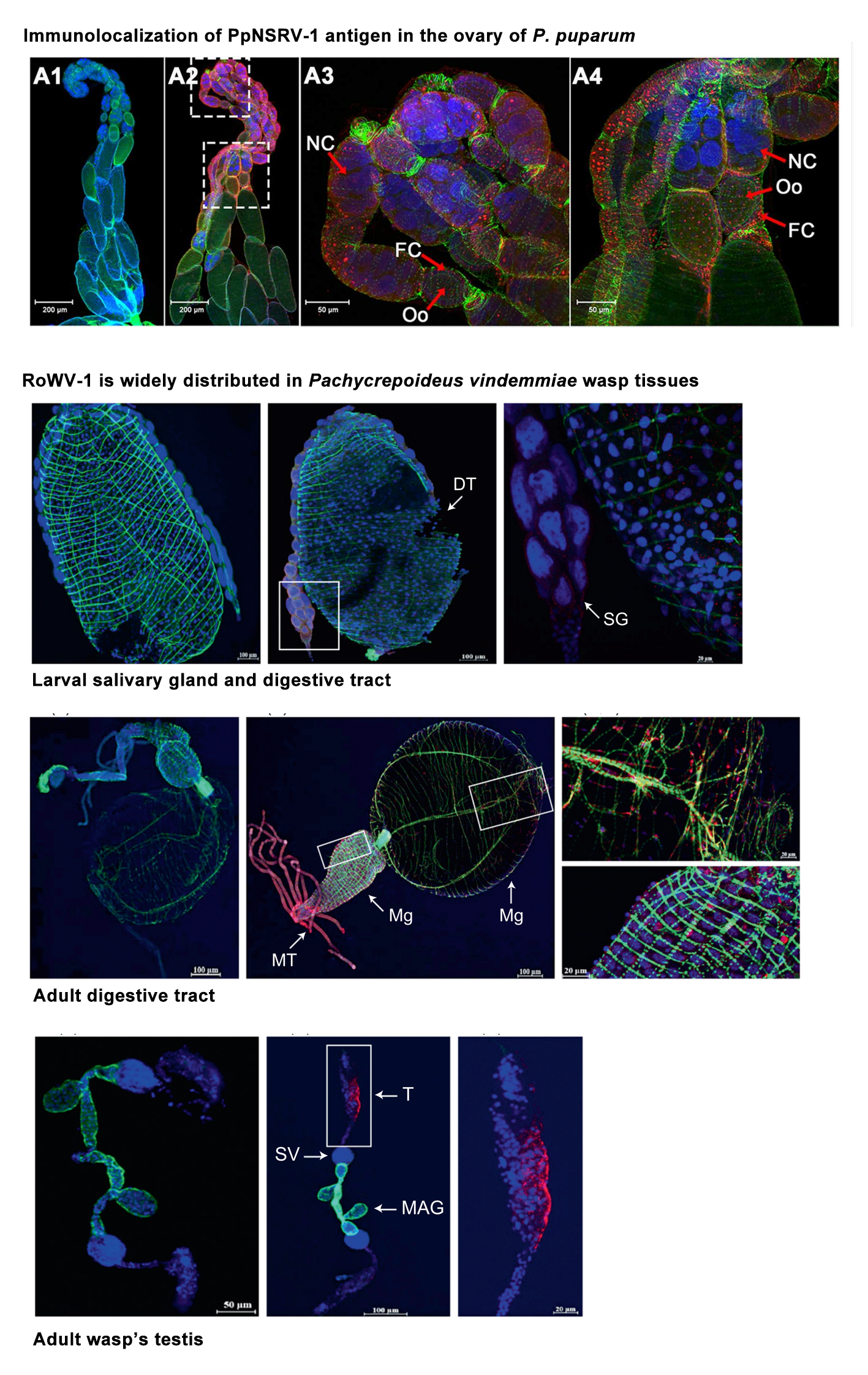
Interaction between insect and rice plant
Three disastrous rice pests, including brown planthopper, Nilaparvata lugens, green rice leafhopper, Nephotettix cincticeps, and rice stem borer, Chilo suppressalis are our research objects. We studied how the rice plants make the defense when they were infested with these pests, and in the same way, how the pests give the feedback when facing the defense. Some additional factors, including natural enemies, small RNA virus, rice dwarf virus, were added in these interactions to fully achieve the complex circumstance in real rice paddies. The aim of these studies was to illustrate the interaction mechanism in the network, and find some new potential insect-resistance genes in rice plants.
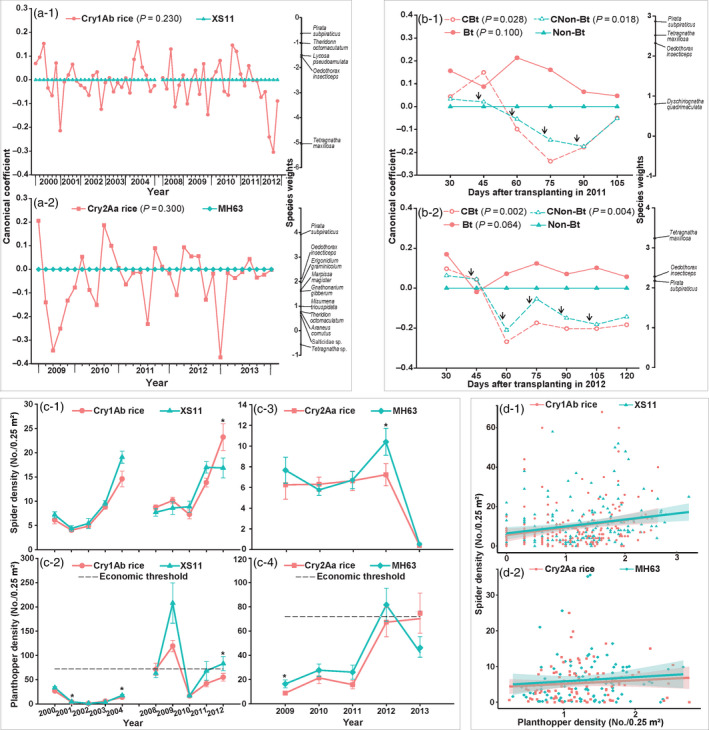
Biosafety assessment of transgenic rice
The safety assessments of transgenic crops on non-target organisms and biodiversity are two important parts in the environmental safety evaluation of transgenic crops. We focused on the safety assessments of Bt (Bacillus thuringiensis) rice and RNAi-based transgenic rice on non-target organisms, especially on natural enemies, combined with the methods in ecology, molecular biology and bioinformatics. Meanwhile, we investigated the arthropod abundance and α-biodiversity with traditional survey methods and some new novel approaches, including eDNA metabarcoding and intelligent recognition, in transgenic rice paddies over the years. These studies will support the industrialization process of Bt rice with strong security data, and also provide theoretical basis and technical reserves for the establishment of safety assessments system for new transgenic crops.
